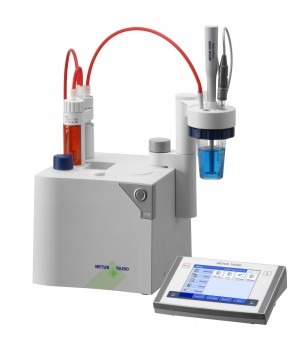
A water-quality analysis centre in Shanghai, China is using a Mettler Toledo T50 Excellence Titrator for potentiometric titration and the Rondo 20 automatic sample changer.
The centre ensures water hygiene and safety for thousands of households and deals with many different water samples daily, including source water, treated water at different process stages and end water.
Every water sample requires a series of analyses.
The main detection parameters are: total hardness, chloride content, residual chloride, COD (chemical oxygen demand) plus alkalinity.
The traditional method is classical manual titration.
Analysts previously stood by the experiment table, one hand operating the glass-titration burette, the other shaking the conical bottle in which chemical reactions were constantly happening, observing solution colour change.
Past experimental data was manually logged.
Mettler Toledo has become a welcomed new partner at the center with a fully automatic potentiometric titration system - the T50 Excellence Titrator and the Rondo 20 fully automatic sample changer.
Twenty sample beakers are put on the Rondo 20 sample changer.
The shortcut key is pressed and the test begins: the propeller stirrer on the titration stand mixes the chemical substances while the dosing unit begins to dispense titrant.
An electrode successfully detects the end-point reaction, freeing up operators.
When the test is completed, all relevant experiment information is printed out to comply with GLP (good laboratory practice).
By the time the report is printed, the instrument has already cleaned the detection electrode and propeller stirrer to be ready for the next sample.
The centre periodically uses a standard substance as a sample to examine the reliability and accuracy of each instrument.
The T50 Titrator obtains precise results in every 'trial test', with measurement results consistently complying with standard values.
The original manual titration burettes are correct up to +/-0.01ml while the dispensing precision of the automatic titrator can be raised to 0.05ul.
In addition, manual titration depends upon colour change to judge end points leading to errors due to operator differences.
Greater errors can occur for titration with non-apparent colour change or those generated by precipitation.
Potentiometric titration eliminates operator errors.





